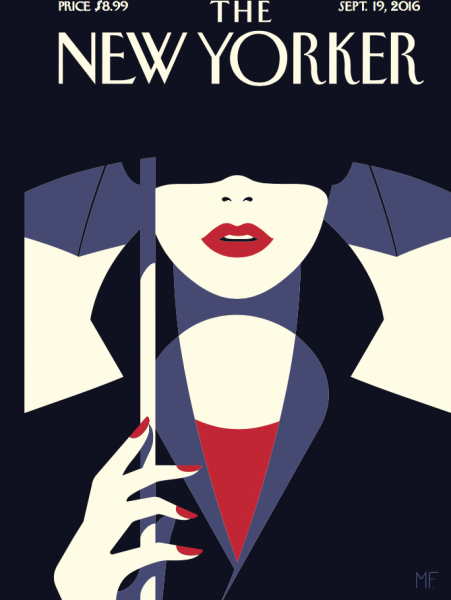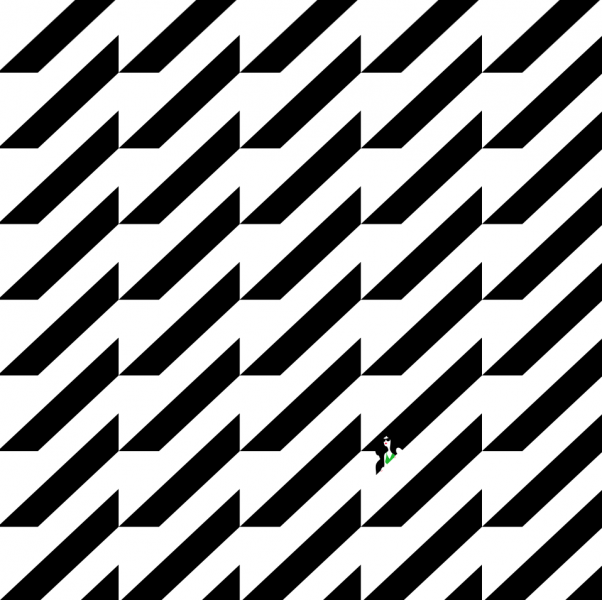Business Insights: Malika Favre

Can you tell us a bit about yourself?
I am a French illustrator based in Barcelona. I was trained as a Graphic Designer but became a Freelance Illustrator in 2011 after spending 5 years at multidisciplinary London design studio Airside. In my 8 years as an illustrator I’ve worked for the likes of The New Yorker, BAFTA, Sephora, The Washington Post, Gucci and Chanel. Today I focus mainly on personal work and editorial covers, taking on commercial work from time to time when the project is right.
You’re represented by Handsome Frank now, but how do/did you approach negotiating with clients?
I was lucky to find Jon straight away when I started, and having a second opinion really helped in understanding the negotiating process. In the early days I was negotiating for half the projects myself, but as the years went by I decided to leave that part to Handsome Frank in order to focus on the creative part. That being said, my Agent and I have a transparent communication and we discuss each project in detail before deciding to take it on: budgets, timings, usage and territory and (most importantly) creative freedom are all important factors. The balance must be right and one thing I discovered is that if you don’t value your work, no one else will.
“We don’t really have a recipe as such when negotiating, but one thing we try to avoid is ask for the client budget first. We think about what the price should be and start the discussion there, as throwing an anchor first is very important. If the client has a set budget he will likely tell you in the first e-mail anyway.”

How do you manage your time and project schedule?
When I started I was taking on too many projects and working frantically. I was young and had the energy and drive to do that so I don’t regret it, but this rhythm wasn’t sustainable in the long term. After 4 years I felt on the verge of a burnout and had to slow down and take some time off. Finding the right balance is tricky when it comes to illustration as this is something so personal. As illustrators we are extremely lucky to be doing what we love, and for me it was always impossible to approach it like a 9 to 5 job. What I did instead was to make sure I kept 20% of my time free, to be able to take on quick turnaround editorial pieces and be able to pitch for New Yorker covers without stressing about the other work I was doing.
There is no set number of projects an illustrator can take or not take; it totally depends on one’s technique and speed. Personally, I try to never split my day working on different ongoing projects as they tend to parasite each other and the work ends up looking the same, but it took me years to figure out a formula that worked for me.
“I now probably take half of the work I was taking on a couple of years ago, but I feel the outcome is better.”

You are great seeing your work as a business – What are some of the most important ways you achieve this? Was there a key moment that made you think more seriously of yourself as a business?
I always knew the business part was important. That was probably inherited from my grandfather who taught me the ropes as a kid. Picturing him talking to two 10 years old kids about the rules of business is quite funny in retrospect, but we were listening carefully and it stuck with both my brother and I. When I decided to leave Airside and start a career as an illustrator I was very worried about the viability of it, so I prepared my exit. After a year of non-stop work, combining freelance and full-time work, I managed to save enough money to be able to live and pay rent for 5 months. It was my safety pillow and took the pressure off. It also gave me the luxury of saying no to projects I didn’t like and steer my career in a direction I was happy with.
“I also made sure to always put aside 30% of what I earn for taxes and took on an assistant to help with the admin part-time as soon as I could afford it.”
Having a good Agent and a good Accountant also helped greatly, so it is all about knowing when to delegate instead of trying to do everything on your own to keep a bigger piece of the cake. In the end it’s all worth it.
We love how vocal you are in terms of your copyright. How do you deal with potential infringements and why is it so important stand up and protect these rights?
I was told early on in my career that copying was the sincerest form of flattery and advised not to take it personally. “It means that you are doing something right”. All illustrators know that developing a style doesn’t happen overnight and takes hard work and patience, so taking the high road isn’t always as easy as it seems.
After a couple of years of being an illustrator, I realised that people mostly copied work that was a few years old. It seemed to be the necessary time for a specific style or treatment to be absorbed by the collective eye and regurgitated in a slightly different form. With that in mind, I started worrying less about what other people were doing and more about pushing my work on as much as possible. Today, however, images are digested ten times faster than they were a decade ago. Social media platforms are now allowing images to travel at light speed through a prism of shares, likes and retweets and (logically) the timeframe between an original and its copy is tightening and it is hard to control the beast.
“There is also a real education problem in the creative industry today. Some young Art Directors believe that Pinterest and Instagram are a royalty free image bank. Also, image banks themselves are a plague for illustrators.”
Getting them to take down copies can be a real crusade and for good reasons: they make money from these copies without owning up to any of the responsibility that goes with it.

Today, I focus on copies that are blatant and come from actual brands or agencies that create content for them. Much like having a good agent, having a good Lawyer is crucial. It took me years to find lawyers that I trusted but it was worth it. Now I don’t think twice about involving the lawyers and going for it. More often than not, a simple official letter does the trick to stop the illegal use of the work but you need to be ready to go all the way which is sometimes daunting. Over the years, I collected what I call my “Legal fund”: every sum I get from a settlement is set aside to pay for future legal fees. That way I feel that previous infringements are paying for it, not me.
“It takes a lot of energy and I sometimes wonder if I should let go, but then I feel a responsibility towards other Illustrators who might not have the visibility or the means to go legal.”
Freelance income can be precarious. How do you manage your finances?
I create a yearly Excel file for projects and budgets, and have a monthly average that I keep an eye on. I don’t budget for holiday, sickness specifically, etc… but I keep an eye on things to make sure I am ok. It is again something that comes with experience. It is important to know how much do you need to live and not be anxious about going to the pub with friends, but it is also important not to obsess about money once you have reached a position that allows you to live comfortably. The danger always wanting more but that means more work, less time, less freedom and ultimately less creative brain space.
What percentage of your income comes from your own product sales?
I have had a shop since the beginning but never really pressured myself to make it my main business and it organically grew over the years, along with my social media following. Today it makes a healthy profit and really came in handy when I decided to slow down on commercial work. It probably represents a third of my income now, which feels like a good balance. Today there are thousands of other income streams for Illustrators from product merchandising to galleries and social media paid posts. It’s up to the individual to decide what they are comfortable with. Personally, I have also been careful about not turning my shop into a merchandising outlet but that is my personal choice. I use it as my own creative space, keeping the editions numbers low and the prices reasonable and don’t really plan on growing it at the moment.

How do you look after your wellbeing?
I surround myself with friends. They know when to raise a red flag and tell me to calm down. To be honest I am not the best at taking care of myself – this is in part due to my obsessive personality and doing things in good measure has never been my strength. Now that I am 36 I can feel it is crucial to start taking care of myself more. I started doing yoga and decided to work less, but better.
“Moving from London to Barcelona was also an important choice for me, and the idea was to move to a city with a more manageable pace (and more sun).”
Top 3 tips for your peers?
- Own your decisions, good and bad alike.
- Tame your own ego and welcome constructive feedback.
- Create work you actually like, regardless of trends and likes.
Back to News Page
